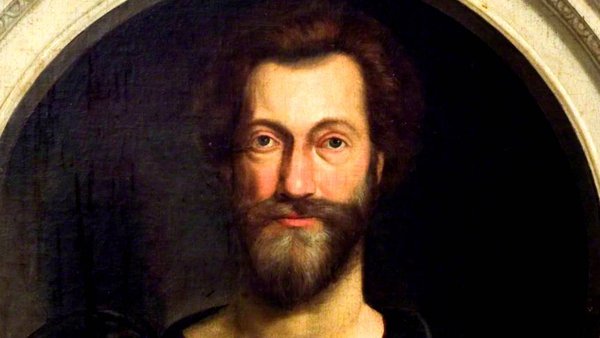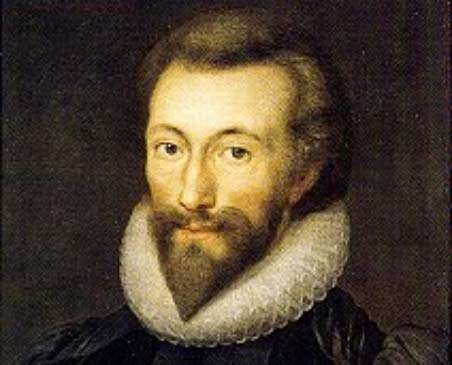The biography of John Donne shows us the life story of the many-sided personality, who in his work not just captured the spirit of the era, but also tried to analyze the surrounding reality. This remarkable personality became the brightest representative of the English Baroque literature.
Born: 22 January 1573
London, England
Who is John Donne: English poet and cleric in the Church of England, founder of the Metaphysical Poets, lawyer
Who was John Donne?
John Donn was an English poet, the most influential representative of metaphysical trends. He is often regarded as the most loved poet in the English language.
When was John Donne born?

John Donne was born on the 22 January 1573 in the catholic family in London. His father, John Donne, was the chairman of the shop of London traders of hardware goods. His mother, Elizabeth Haywood, originated from the catholic family, was the daughter of the playwright John Haywood and the grandniece of Thomas More.
John Donne life
Members of the family of John were more than once subjected to persecution on the part of authorities because of belonging to the catholic church. The father died, when the son was three years old. Several months later, the Donne’s mother married a wealthy widower John Siminjess. Donne was brought up in the spirit of Catholicism.
Education
John studied in the Oxford and Cambridge Universities, but got a diploma nowhere: restrictions introduced for Catholics impacted. He continued the training in the school of barristers of the Lincoln`s Inn.
John Donne’s family

The future poet grew up in a recusant Roman Catholic family. The religion wasn’t legal in England at the time. He had two older siblings and three younger siblings. The name of his father, who died when the boy was only four, was the same, John Donne.
Donne was brought up only by his mother since he was four. John Donne’s maternal grandfather was a playwright, while his maternal uncle was a Jesuit priest and translator.
In 1601, he secretly married Anne More. During their 16-year marriage, 12 children were born (two of them stillborn). She died shortly after their last, stillborn baby appeared, and was deeply mourned by her husband.
Career and personal life

After the completion of the training, Donne led an absent-minded lifestyle, having spent a large part of his inheritance. In the 1596—1597, he undertook a journey to the European continent, participated in military trips of Walter Raleigh and the count Essex to Cadiz and the Azores. Donne did not return immediately to England and for several years lived in Italy and Spain, familiarizing himself with laws and customs and studying languages of these countries.
Satirical verses on the contemporary English society became Donne’s first compositions. “Satire I” is dated by the 1593.
After his return to England, Donne was appointed to a job of secretary to the influential courtier, the keeper of the monarch’s seal, Sir Thomas Edgerton. Having loved the niece of his patron, Anna Mohr, he secretly married her (1601). When Edgerton found out about this, he sacked Donne and achieved his committing to prison.
Having been released from the prison, Donne together with Anna settled down in the estate of her relatives Perford in county Surrey. Only in the 1609, Anna’s father acknowledged him as his son-in-law. Donne earned his living as a bar and was an assistant of the bishop Thomas Morton. He did theology, carefully studied doctrines of the Catholic church and the Anglican church. At the same time, the poet was included in polemic with Catholics on the side of Protestants, having written satires “Pseudo-Martyr” (1610) and “Ignatius his Conclave” (1611), directed against the Society of Jesus. Yakov I paid attention towards the Donne’s polemic skill. The king, confident of the fact that Donne was destined to become a wonderful preacher, variously rejected requests of patrons of the poet about the provision of a secular post to him.
In the 1611, Donne created “An Anatomy of the World”, in the 1612 – “Of the Progress of the Soul”.
Twice (in the 1601 and the 1614) Donne became a deputy of the parliament. His family grew rapidly– during a number of years, Anna gave birth to a child almost annually. Donne experienced serious material difficulties. The causes of the Donne conversion to Anglican faith were unknown, probably it was a consequence of a spiritual crisis experienced by him. The death of children (a daughter and a son) accelerated Donne’s acceptance of important for him decision. In his verse XVII from the series “Holy Sonnets” dedicated to the memory of his wife, the commentators see proofs that it was Anna, who helped Donne to get a soul balance after a separation from the catholic church. This work of the author as well as the series of verses “La Corona” (1607—1609) are considered the top of creation in the biography of John Donne.

In January 1615, he was inducted into a priest from the rank of the deacon. Regularly he preached sermons in the Lincoln`s Inn, three churches of his parish, and houses of his friends for special cases.
In August 1617, Anna bore a dead child and died five days after the labor.
In the 1618, Donne took the degree of doctor of theology of the Cambridge University. He escorted a viscount Doncaster directed with a legation to Germany (1619). He returned to England in the 1620.
In November 1621, Donne became a prior of the St. Paul Cathedral in London. He had reputation of an eloquent preacher possessing gift of persuasion. His 160 sermons were saved.
Sharpness, complicated syntax, images, speculation on contrasts, ambiguity are typical for the Donne`s lyric. His verses are addressed to the prepared reader capable to make a certain intellectual effort for the understanding of them. He was not the first poet, who used a konchetto, but made it by an important means of his lyric, the unexpected association came for help to the author in a term of movement of his thought.
His works were not published in life and circulated only in manuscripts, Donne himself did not want to publish them. The first book was edited only in the 1633.
In honor of John Donne, a crater on Mercury is called.
Popular poems by John Donne
- Holy Sonnet XIV: Batter My Heart, Three-Personed God
- Holy Sonnet X: Death Be Not Proud
- For Whom The Bell Tolls
- The Good-Morrow
- The Flea
- The Broken Heart
- Song (Go And Catch A Falling Star)
- A Valediction: Forbidding Mourning
- The Triple Fool
- The Sun Rising
Death of John Donne
The most famous sermon “John Donn, Death’s Duel”, was pronounced by him in the Whitehall before King Carl on the 25th of February, 1631, several weeks before the own death. Donne died on the 31st of March, 1631. Immediately before the death, he ordered to create his own portrait in shroud. The sculptured version of this portrait is installed above the Donne’s grave in the St. Paul Cathedral.
John Donne death: 31 March 1631 in London, England



